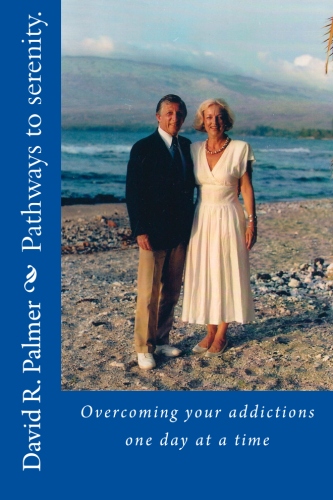It’s no secret. Prison inmates have a tough time staying out of prison after they have been released. Estimates vary but one, accepted by many, says about three out of four commit another crime or break parole and end up behind bars again. They call this “recidivism.”
Why do they do this?
Hector Lozano with the California prison system says the simple fact is that “these men and women ex-prisoners know how to get back into prison. What they don’t know is how to stay out.”
True, but actually there is no real mystery about why they keep going back in — often multiple times. It has to do with drugs and with inadequate coping skills when it comes to life on the outside. The brain doesn’t get much of a workout in prison.
Housing inmates is expensive. If you figure it costs about $30,000 a year to house one inmate, it comes to a total of about $90 billion a year at current prices. Of course, you can’t measure the toll in human suffering,
Drugs are implicated in 80 percent of the crimes committed, and a large percentage of inmates have continuing substance abuse problems which re-emerge when they get out of prison, often with prompting from drug dealers waiting near the prison gate.
Current efforts to reduce recidivism address the substance abuse problem, and many living problems as well, mainly through Alcoholics Anonymous and Celebrate Recovery 12-Step meetings in prison and on the outside as well as through programs like the late Chuck Colson’s InnerChange Freedom Initiative (IFI), Principals and Applications for Life (PAL) and Prison to Purpose (P2P).
With the exception of AA, all of these programs are Christ-centered. Churches, which have struggled with the addiction problem in the past, are also stepping up to the plate in increasing numbers.
There are other nonprofit programs, too, which help inmates make needed adjustments to life on the outside. “Get Out and Stay Out” is a successful mentoring program in the New York City area, which was featured in the Wall Street Journal recently, and another is “Coming Home to Stay” in San Diego.
The Coming Home to Stay model “touches every possible aspect of a returning prisoner’s life,” it states on its website, “what it takes, step-by-step to help someone successfully transition from prison to the outside world, from pre-release to post release to several years out. The model addresses barriers to fulfilling a person’s obvious needs—housing, healthcare and employment—but also the not so obvious needs.”
As to the latter, one service provider pointed out on the site, that almost two thirds of his clients leave prison with no form of identification. “You can’t get a Social Security Card without a picture ID; and you can’t get a picture ID without a birth certificate—and it’s expensive.” He said it could require the involvement of three different agencies to get the job done.
We, at One Day at a Time, have, we feel, have made a modest contribution toward reducing recidivism by promoting recovery as a way of life and by identifying resources available to inmates and recently released inmates.
That was our theory when we began distributing small quantities of the One Day at a Time publication through volunteers and the chaplains and 12-Step meeting chairmen in several prisons six years ago.
With encouragement from Larry Norris, then head of the Arkansas Department of Corrections (ADC) and G. David Guntharpe, director of Arkansas Department of Community Corrections, we increased prison distribution of the One Day at a Time publication from about 1,500 copies to 10,000 copies per issue. At the peak we were distributing papers to 14 ADC prisons, 6 DCC prisons and 49 parole offices.
We also conducted a pilot survey of inmates to get feedback which would lead to actions aimed at reducing recidivism. Tom Jones, who was in charge of One Day at a Time’s prison distribution, took the lead.
To help with the project, Tom contacted Tom Mckeithen and Chris Larrison, principals in Healthcare Performance, a Florida firm which includes market research among its many services, and asked them to assist us in designing the questionnaire and tabulating and analyzing the results.
We conducted surveys this past summer among the male inmates at Arkansas’s Tucker prison and female inmates at Wrightsville’s Hawkins unit. We got 125 completed questionnaires from the men and 34 from the women. Most of the respondents had less than two years to serve and their major concern was about getting a job when they got out.
All but a few of the respondents were enrolled in the IFI and PAL programs which are designed to help prepare prisoners for life on the outside. The survey results are biased somewhat by that experience and also by the small size of the sample, but the findings are consistent with what we expected, and will help in further testing of the waters.
We hoped the surveys would provide answers that would guide us in providing information to inmates in the newspaper that would help prepare them for life on the outside. We also wanted to encourage churches and other institutions as they sought to respond to the crucial need for their support for newly released inmates.
Most inmates are anxious about making a successful transition from prison to a life of freedom on the outside. They say they need more information about how to plug into society and more resources to call on.
Specifically, inmates want to know how to find a job and a “safe” place to live, where to get transportation, how to avoid the temptations of drug dealers lurking near the prison gates, how to get a mentor or sponsor, where to find recovery meetings and churches and, as already stated, how to get driver’s licenses and other documents.
The survey provided guidance in other areas as well.
It confirmed our belief that the testimonials of those in recovery do indeed provide hope and encouragement for all those, whether in prison or out, who seek freedom from their addictions, and we will continue to emphasize them.
We also found differences between men and women inmates in their interests. The women were much less fearful about transitioning to the outside, although they did want information, which was the number one concern of male inmates. For women it was fifth.
Aside from providing inmates with information and hope as they seek to adjust to the outside world, we also want to encourage them to develop creative aptitudes that are likely to provide enjoyment while in they are in prison as well as when they get out and might even provide an income.
Inmates of several prisons have submitted their paintings to the annual Christmas Arts Festival at Fellowship Bible Church, for example, and the first year there were four entries, and all four were all sold.
Our idea is to promote writing. In our questionnaire, we asked inmates if they would like to contribute to One Day at a Time by writing an article for the paper. Among women inmates it was the most positive response of all the items measured. The men were less enthusiastic, but several have already sent us material.
Bill L. at Tucker prison sent us his manuscript for a novel “Ride to Live,” based on his own experience as a biker. We are giving it a read, and it has grit and promise. Maybe we have another Louis Lamour in the making.
In 2011 we discontinued the publication, because of the growing expense and limited distribution, to focus on developing our web site and publishing books about recovery. Some prisons offer some inmates limited access to computers, and the times suggest that this trend will accelerate. We, at ODAT, intend to participate in these developments as a resource for rehabilitation.



